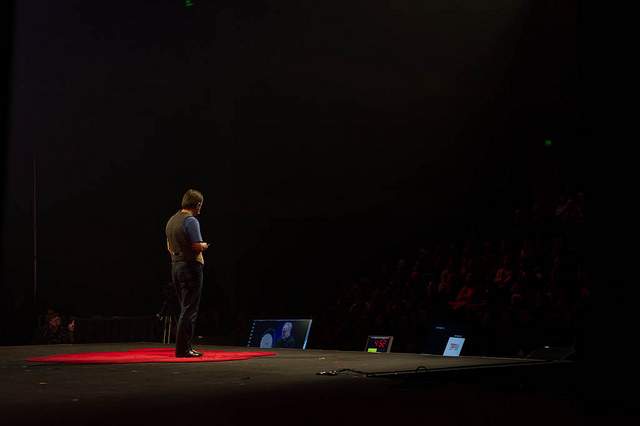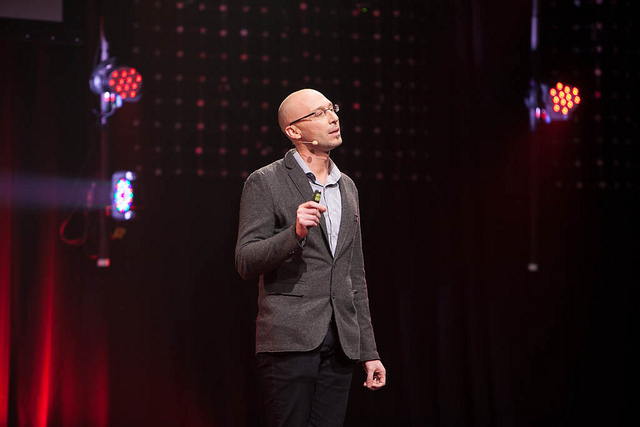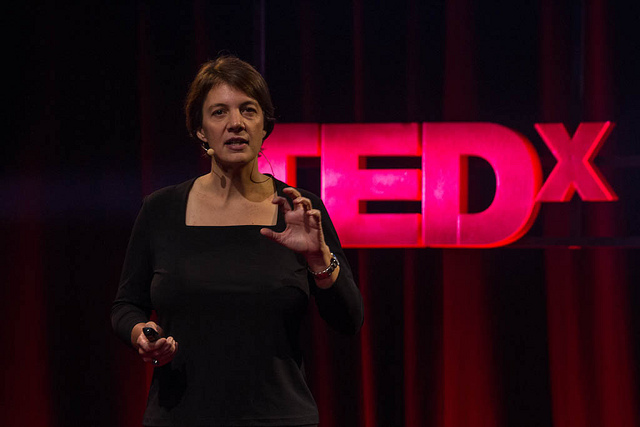TEDxSydney Speakers Talk Robots, Quantum Computing and Imaginary Friends
TEDxSydney speakers explain if we should feel safe around robots, where to get an imaginary friend and how to explain quantum computing to children.
While Chris Anderson was a big deal at TED's local TEDxSydney this year, the stars of the day were the regular TED speakers. Talks on the sign-reading skills of bees, the need for random selection to the senate, how coral fits in with the Transit of Venus and the unremarkable things that kill us all made for attention-grabbing stuff.
Concrete Playground had the chance to chat briefly with three of these speakers, their fields covering whether to feel safe around robots, where grownups can get an imaginary friend and how to explain quantum theory to schoolkids.

Hugh Durrant-Whyte is a former roboticist now working at NICTA in Everleigh. In his talk he explained not the future of robots, but what robots are already doing. He talked to us about the shape of robotics now and in the future.
You said once before that you were a bit of a luddite. Is that still true?
I don't have a mobile phone, I don't drive a car. I don't have a driving license. If that's a luddite: I'm a luddite.
Why do you love robots? What got you into the field?
Well, they're cool. As an engineer, I think what really drives you is making a difference. And it's so clear to see that in robotics.
What do real robots look like? What sort of variety is there?
Really anything. Imagine a machine: whether it's a car, or an aeroplane, or something that looks human-like, or indeed is perhaps just an arm, or just legs, or just a head. Any of those can be a robot. Because a robot in the end is simply this idea — that you observe what's really happening in the world, using sensors, vision for example. And you use that to decide what you're going to do, whether you're going to pick something up, manufacture a car, fly in a particular direction or drive down the street.
And that makes a robot. It's the fact that it adapts to the world, or is capable of adapting to the world. So, it doesn't need just rules like you have in a normal computer program. Autonomy is a key word in this: without human intervention. The crucial thing in the perception part of it, is to be able to detect failure and to be able to autonomously recover from that. If you can do that then you can get a robot like the Port of Brisbane ones that have now operated for 5 years non-stop, 24 hours a day. All of them without ever going wrong. You have to be able to detect and recover from all failures. Not just the ones you model, but "unknown unknowns". Which is the challenge.
When I was growing up I was a big fan of Isaac Asimov. And what me feel safe about robots was basically because I had this model of the three laws of robotics. Why should I feel safe about robotics with real robots?
I'm not sure you should feel safe, I think it's fair to say. How far do you push robots? It's a tricky question. But it's a tricky question with all technology.
We do have things now: these drones, the UAVs. They don't actually decide to shoot [for] themselves, a person does that. But, let's be honest here: you could probably figure out how to do that bit. There's a fine line there. And, sending robots to war? I don't know.
Skynet must be something you end up talking about a lot?
I think the bigger question people ask you about, in truth, is job loss. This brings us back to Ludd. We have gone through industrial revolutions for 300 years that have gradually automated things, and robotics is in some sense the logical conclusion of that.
The other Chris Anderson was saying that as different things become abundant, you get new scarcity.
I agree. I think that indeed is the case. The one thing, personally, that slightly worries me about it, now that I'm not really in robotics any more, is… Robots are replacing groups that are least able to actually retrain. Or use their lives in some productive other manner. So I no longer work in robotics: if that isn't clear.

Evan Kidd researches imaginary friends. In his talk, he explained their value for children. Once parents understand what he has to say, they often ask how they can get one for their own kids. He talked to us about where grown-ups fit in.
What's the difference between me liking Doctor Who or Joss Whedon's super-hero movies and me having an imaginary friend?
Nothing. Absolutely nothing. It's fantasy play. And these behaviours — like being, for instance, into science fiction, or things like Star Trek, or Buffy the Vampire Slayer, even Twilight — these provide fantasy elements that are exactly like fantasy play with children. Except, what you're doing really is not inventing it. But when you get to things like fan fiction and things like that, that's exactly what it is.
Do you know the comedian Amy Sedaris? She would go on Letterman all the time and talk about her imaginary boyfriend Ricky. These behaviours don't go away. They just change. So often what you would find, for instance, in elderly couples, when one has died, the other will continue to talk to their dead spouse. And not in a creepy way, but in a way to keep their relationship with them alive. And that's exactly the same thing as what's happening with an imaginary friend in some way.
It's just a really nice way — through really what is fantasy, but has a beginning in reality — of keeping warm and nice feelings available to you.

Michelle Simmons runs the ARC Centre of Excellence for Quantum Computation and Communication Technology. What does that mean? She works to make quantum computing practical. What does that mean? She works to make computers run incredibly fast. In keeping with the global TED's new focus on education, she talked to us, very quickly, about how she explains science to a younger audience.
Do you normally talk to non-scientific audiences?
I do a lot of talking in schools.
Teenage or younger?
All the way down. At the university of NSW we have an outreach group, and for years I've told them I'm very keen to talk to schools. It's actually the most enjoyable part of everything I do. Over the years I think people have tried to dumb science down for them. And I don't think you need to.
What sort of things do you tell them? The same things you were saying here?
I actually add probably even more technical details than I would have had at the [TED] talk. I think the thing they don't appreciate is that we lead science in Australia, internationally. And I think they're just not aware of that. They just think that we're following other people.
My field is quantum physics, and in Australia we're working on silicon quantum computing, we've got people doing optical quantum computing, people doing communication in the quantum medium, we've got astrophysics, we've got Brian Schmidt talking later today. What he does is world-leading. I mean: every area that I know in Australia is world leading.

Leading image of Chris Anderson by Fe Lumsdaine, Lumsdaine Photography. Image of Hugh Durrant-Whyte by JJ Halans. Image of Evan Kidd by David Clare, First Light Photography. Image of Michelle Simmons by JJ Halans.








